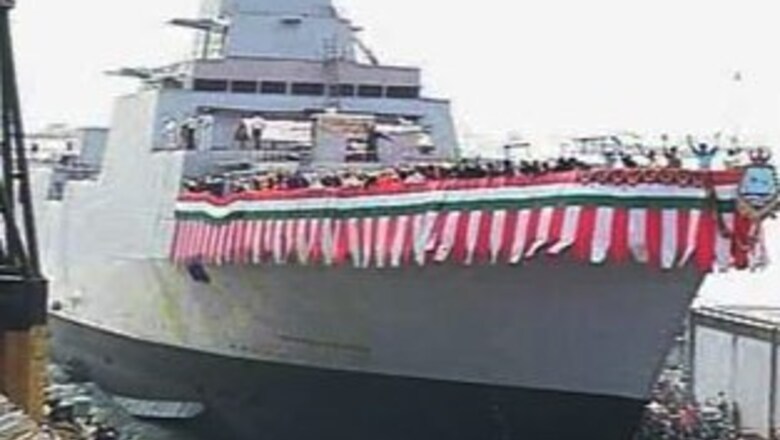
views
Mumbai: Indian Navy added more fire power to its arsenal on Friday with the launch of country's second indigenously designed stealth destroyer INS Kochi.
Designed by the Directorate of Naval Design and built at Mazgaon Dock in Mumbai, the 163-meter long and 6,800-ton stealth destroyer was launched by the Navy Chief Admiral Nirmal Verma's wife Madhulika Verma.
The warship is the second of three Project 15-A Kolkata class stealth missile destroyers. The first vessel, INS Kolkata, launched earlier, is expected to join the fleet in 2010, followed by INS Kochi in 2011 and the third in May 2012.
INS Kochi is the latest stealth destroyer with land attack capability built for the Indian Navy and has advanced stealth features which make the warship less vulnerable to detection by enemy radar.
The warship propelled by four gas turbines can travel at a speed of 30 knots and will be armed with the latest weapon systems including Brahmos supersonic cruise missile.
The warship will also have Long Range Surface-to-Air missiles and a Multi-Function Radar System for acquiring data on surface and air targets.
For close-range defence capability INS Kochi will have four AK-630 rapid-fire guns and a medium range gun. The warship will also have indigenously developed twin-tube torpedo launchers and anti-submarine rocket launchers to take care of enemy attacks from under the sea.
There is space for two multi-role helicopters, too, on the ship which along with the NPOL developed Humsa-NG hull-mounted sonar will add to the warship's anti-submarine capability.
A pontoon-assisted launch technique, being used for the first time in India, has been employed to avoid slipway constraints on heavier vessels.
What is a stealth warship
A stealth ship employs stealth technology construction techniques in an effort to ensure that it is harder to detect by one or more of radar, visual, sonar, and infrared methods. These techniques borrow from stealth aircraft technology, although some aspects such as wake and acoustic signature reduction are unique to stealth ships' design.
Reduction of radar cross section (RCS), visibility and noise is not unique to stealth ships; visual masking has been employed for over two centuries and RCS reduction traces back to American and Soviet ships of the Cold War. One common feature is the inward-sloping tumblehome hull design that significantly reduces the RCS.
In designing a ship with reduced radar signature, the main concerns are radar beams originating near or slightly above the horizon (as seen from the ship) coming from distant patrol aircraft, other ships or sea-skimming anti-ship missiles with active radar seekers.
Therefore, the shape of the ship avoids vertical surfaces, which would perfectly reflect any such beams directly back to the emitter.
Retro-reflective right angles are eliminated to avoid causing the cat's eye effect. A stealthy ship shape can be achieved by constructing the hull and superstructure with a series of slightly protruding and retruding surfaces.
(What is a stealth warship information courtesy Wikipedia)




















Comments
0 comment